When it comes to Quang Tri tourism, most of us think of the land associated with bombs and bullets, the land rich in a heroic and steadfast revolutionary tradition. Today, in addition to the history of heroic struggle, Quang Tri also has many cultural, ecological and resort tourist attractions. MYTOUR.ASIA shares Quang Tri tourist attractions, the land and people here.
1. Quang Tri ancient citadel
Quang Tri Ancient Citadel , a place nearly 50 years ago, awakened the conscience of humanity around the world by the fierce confrontation of the liberation army in the 81 day and night war, the historic summer of 1972 against the counterattack. recaptured by the Saigon army.
That historical event wrote an epic poem about revolutionary heroism, marking a turning point in the history of the national liberation struggle and becoming a typical cultural heritage of the country. Quang Tri Ancient Citadel is not only the message of the fierce cruelty of bombs and bullets, but also the fierce cruelty of each human fate in the war.
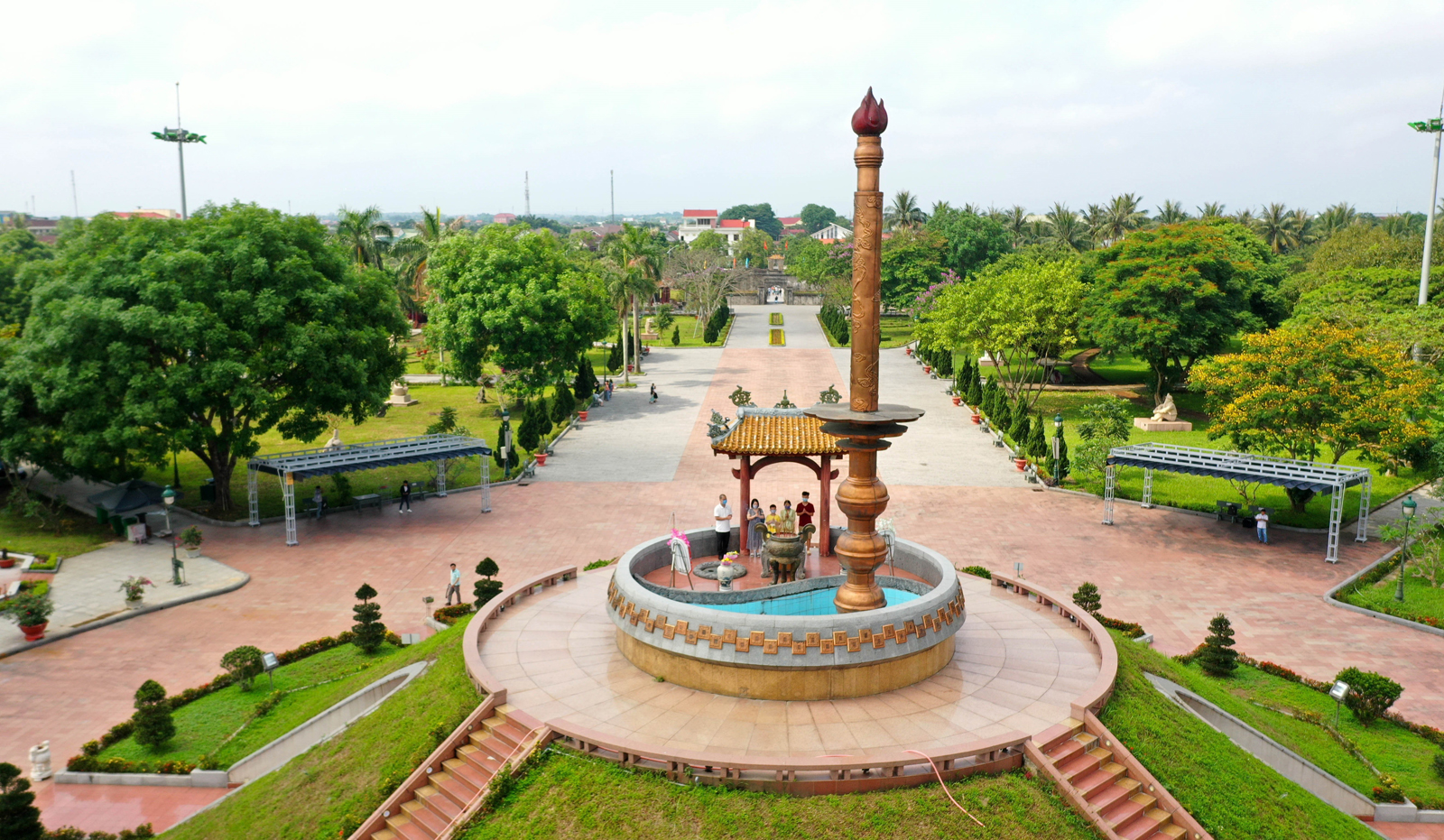
This war took place at a very sensitive and decisive time when the cards on the battlefield affected each side’s position at the negotiating table of the Paris Conference on ending the war and restore peace in Vietnam.
Therefore, to maintain the ancient citadel and Quang Tri town, thousands of Liberation Army soldiers across the country and compatriots across the country fought heroically and forever stayed on this land. They sacrificed their lives, but some of them are no longer intact, their blood and flesh have mixed into the ground so that every inch of soil, tree branch, blade of grass, every step we take into the ancient citadel today is absorbed. the blood of so many martyrs.
The sacrifices and dedication of the children with revolutionary ideals have built a monument to the desire for independence and left the next generation a noble philosophy of life, the dedication of their last breath for the sake of honor. name of the fatherland.
With these meanings and historical values, Quang Tri ancient citadel has been invested in by the Party and state to restore and embellish it into a memorial site to pay tribute to fallen heroes and build more museums. to keep among the artifacts and photos of this war.
If you have chosen to travel to Quang Tri, the ancient citadel is a place you must definitely visit to light a stick of incense for the people lying under the tender green grass. About 1 km away (from the main gate of the citadel) is Thach Han river.
“The ferry to Thach Han… paddle gently.
The river bottom is still there, my friend lies.
At the age of twenty, the water waves
calmly lapped at the shore, forever for a thousand years”
(Words of people by the river – Le Ba Duong)
Quang Tri ancient citadel and Thach Han river have entered poetry as tragic pages of history soaked in blood and flowers. Coming here on the occasion of the liberation of the South on April 30, National Day on September 2, especially on the occasion of July 27 – War Invalids and Martyrs’ Day, you will be able to join the people of Quang Tri town in dropping flower lanterns into the Thach River. Khan. But different from the poetic feeling in Hoi An, the flower lanterns in Thach Han are very strange. Come here to feel it!
2. Bich La ancient village
Bich La ancient village was formed by the migration to the South of people from the North, since the reign of Lord Nguyen. Despite experiencing many ups and downs of history, the people of Bich La village still retain unique cultural features, rich in traditional identity.
This is not only the birthplace of many talented and famous people throughout the country. During the war with the US and France, Bich La was also an important revolutionary base during the victory in Quang Tri Citadel, which was fiercely bombarded by the enemy.
3. Cua Tung Beach
Cua Tung beach is located in Vinh Linh district, Quang Tri with smooth, white, gentle sand in the middle of cool, clear blue water. In the summer, when the hot, dry Lao wind blows through the sunny and windy land of Central Vietnam, Cua Tung becomes even more attractive to tourists.
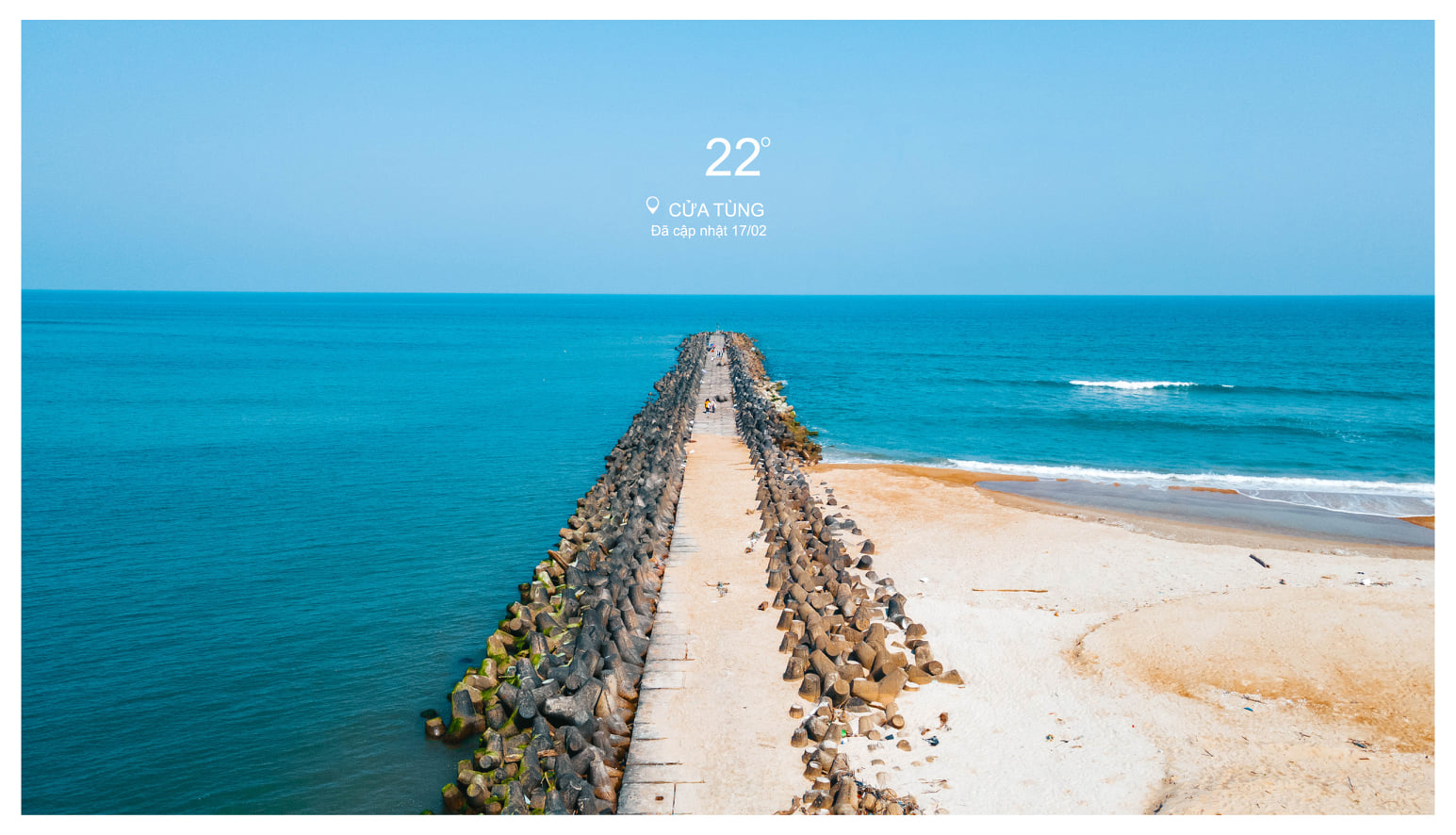
In the eyes of foreigners, Cua Tung is the “Queen of beaches”. Lareine des plages – The French government discovered the poetic beauty of Cua Tung. When King Bao Dai came to Cua Tung, he built a private beach and was dubbed the “Queen” of beaches. Quang Tri tourism is very focused on calling for investment. It is expected that in the future, Cua Tung will have a beautiful, luxurious and attractive tourist area.
4. Vinh Moc Tunnels
Vinh Moc Tunnels is also located in Vinh Linh district, quite close to Cua Tung. This is a magnificent underground military structure, born during the resistance war against the US to save the country. With the slogan “militarize the entire population, fortification of the entire region” Vinh Linh’s army and people have dug trenches, with many functions: headquarters, logistics warehouses, schools, hospitals, living areas. of each family…, arranged throughout the residential areas, along the roads, along the fields, and on the coast, connected by a network of trenches instead of roads on the ground.
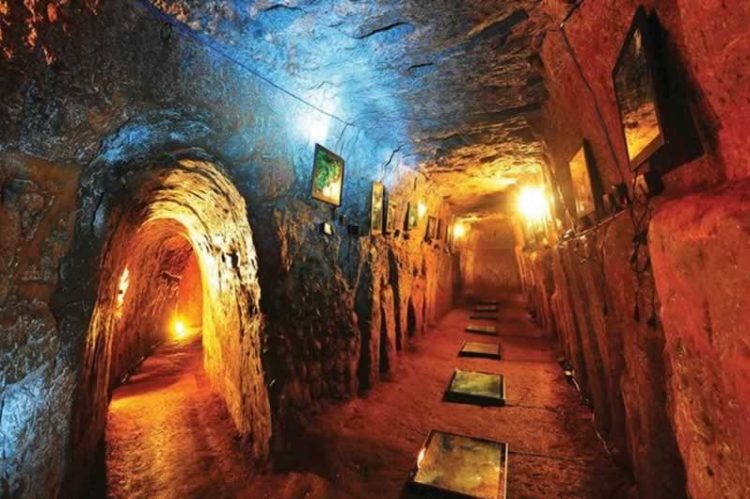
From the end of 1965 to 1968, the entire Vinh Linh district had about 114 tunnels with a total length of more than 40km, a trench system of more than 2,000km and hundreds of other tunnels, becoming “tunnel villages” – for the first time. first appeared in the history of the Vietnam War, expressing the will with the motto: “One inch does not go, one inch does not leave. Each village and commune is a fortress, fighting to protect the homeland and keep blood vessels flowing to the front line.
5. Con Co Island
Con Co is an island district of Quang Tri, with a particularly important location as the dividing point of the Gulf of Tonkin – Southern gateway of the Gulf of Tonkin. Con Co Island is also an outpost to protect national territorial sovereignty at sea. This is also a place associated with fierce battles to protect the sea and islands, demonstrating the heroic fighting tradition of the army and people. country in general and Quang Tri in particular.
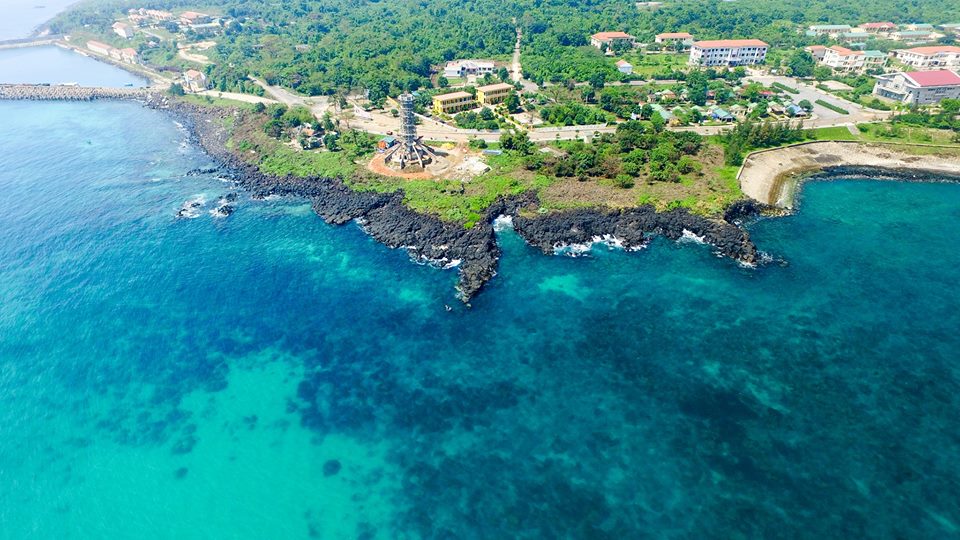
On the island, there are two wharves: Nghe wharf and Tranh wharf, the most beautiful natural tourist attractions on the island. At Nghe wharf, where the island’s first rays of sunlight are welcomed, the sea breeze is strong and the waves crash against the rocks, square almond trees stretch out to the sea as if they are extending their arms, firmly blocking the storm for the small island. . Coming to Tranh wharf, the beach here is very cool, with full services for renting life jackets, swimming goggles, and tools for diving to see coral.
Con Co is formed from volcanic lava. That’s why the rocky beach has a very characteristic jet black color. If you have the opportunity to travel to Quang Tri, visit Con Co Island to experience the life of people on the island, contributing to promoting the economy, affirming and protecting Vietnam’s island sovereignty.
6. Our Lady of La Vang Pilgrimage Center
Our Lady of La Vang pilgrimage center is located in Hai Lang district, Quang Tri, part of the Archdiocese of Hue. This place has had to go through many events of history and time.
According to legends and stories, this is where the Virgin Mary appeared to guide and comfort parishioners who fled from the Tay Son army during the reign of King Canh Thinh with a decree banning religion.
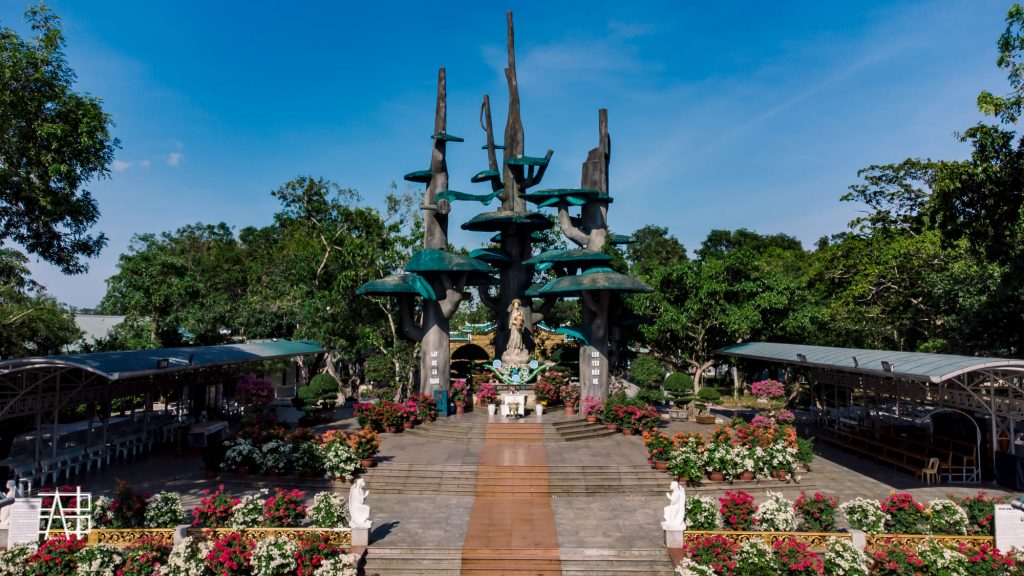
The architecture of the church here follows the traditional architecture of Catholic church buildings. In the heart of the pilgrimage center, today remains the remains of the bell tower of the Basilica of Our Lady of La Vang. This project was built from 1924 – 1929, major restoration in 1959.
In the summer of 1972, the Basilica was destroyed by war. Currently, Our Lady of La Vang Pilgrimage Center has had many renovations and additions. If you choose to travel to Quang Tri, visit the Our Lady of La Vang Pilgrimage Center and learn about the interference of Asian and European cultures and beliefs here.
7. Hien Luong Bridge – Ben Hai River
In the history of our people’s defense of the country, there are rivers, mountains, villages, slopes, bridges, etc. that have become legendary, transformed into important historical evidence, attached and alive in our hearts. Among Vietnamese people, there is a historical bridge – Hien Luong bridge. And the river is a beautiful image of homeland and peace. However, there is a river that has to carry within itself resentment, suffering from the separation of the homeland and the country, a river that is split in half on both sides of the border line, that is the Ben Hai River.
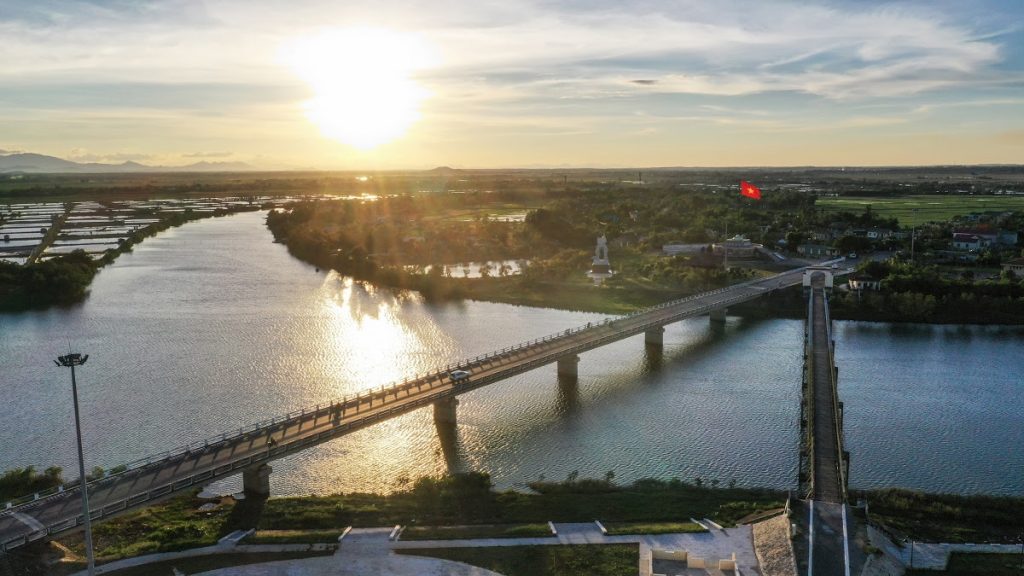
Hien Luong Bridge is a bridge connecting National Highway AH1 (trans-Asia route), spanning the Ben Hai River in Hien Luong village, Vinh Thanh commune, Vinh Linh district, Quang Tri province. This place had to endure the division of North and South Vietnam for more than 20 years during the resistance war against the US to save the country.
8. Truong Son National Martyrs Cemetery
War goes into memory, but the wounds still leave scars that cannot be forgotten. Truong Son Cemetery serves as a testament to the crimes of the enemy and also the tragedy of the Vietnamese people who sacrificed their lives and youth, putting the country’s fate above all else to regain independence. for the nation.
Truong Son Martyrs Cemetery is a gathering place for 10,263 martyrs’ graves of the Liberation Army of South Vietnam and the Vietnam People’s Army, on the Truong Son route – also known as the Ho Chi Minh trail.
The cemetery was built in the Ben Tat area, next to Highway 15, in Vinh Truong commune, Gio Linh district, Quang Tri province, about 38 km west of Dong Ha city, the capital of Quang Tri province. North, about 20km northwest of National Highway 1A (Gio Linh district town).
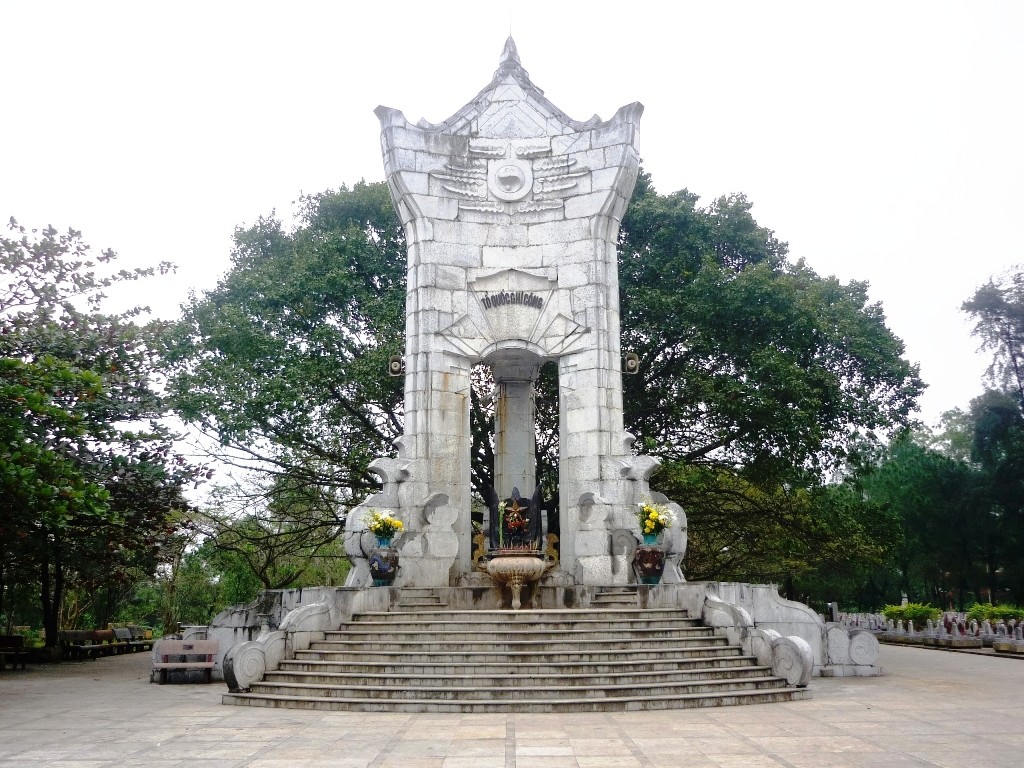
The total area of Truong Son National Martyrs Cemetery is 39.8 hectares; with 5 zones located on vast hills, next to the upstream of Ben Hai River. This is the gathering place of 10,263 remains of martyrs who fought and died on the legendary Truong Son route. Construction began on the cemetery in October 1975 and was completed two years later.
Since the end of 1974, the first martyrs’ graves were gathered here. During the resistance war against the US, more than 20,000 of the country’s elite people fell on the Truong Son route and more than half of them have not yet found their remains. In the tourist routes of the Central region, there are many interesting and attractive sightseeing spots, but when you go, don’t forget to pay tribute to those who have sacrificed their lives for their homeland! This is a Quang Tri tourist attraction that you should not miss.
9. Khe Sanh
Khe Sanh is the name of a town in Huong Hoa district – Quang Tri. This is a place associated with the nation’s heroic history. In the years 1965 to 1966, the US army and its lackey government chose Khe Sanh as the largest base in the Route 9 defense line.
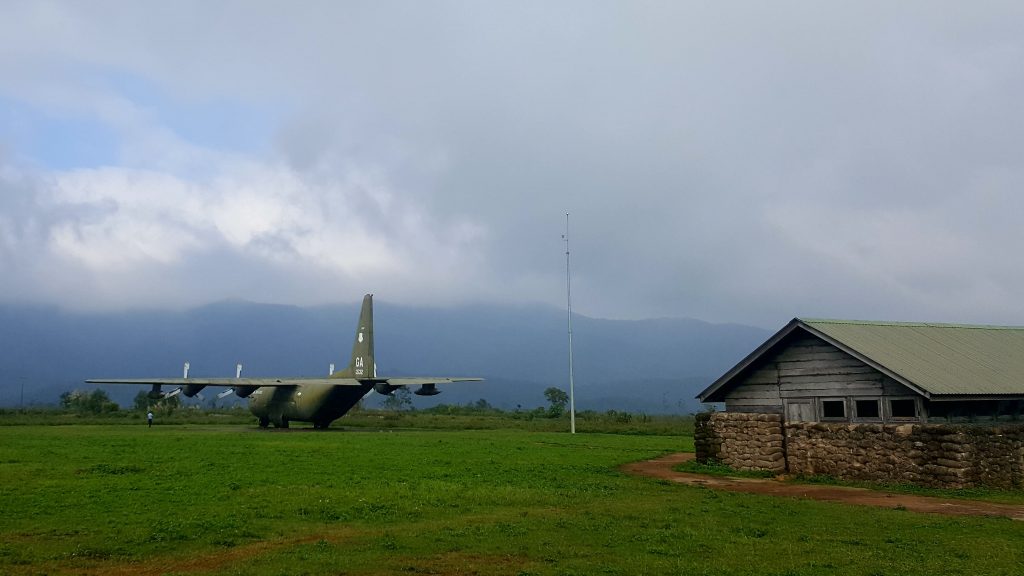
Khe Sanh, along with Lang Vay and Ta Con, are considered the “three eyes of god” by the US military and the Saigon puppet government. With the hope of being able to separate the Ho Chi Minh Trail and prevent the military and people of the North from sending human resources to the kin of the South.
In early 1968, our army and people launched the Route 9 – Khe Sanh campaign. After 170 days and nights of attack, on July 9, 1968, Khe Sanh was completely liberated. Huong Hoa became the first district in the south to be liberated.
Traveling to Quang Tri to Khe Sanh, you can also visit some other attractions such as Khe Xanh stupa, Sa Mu pass, Chenh Venh waterfall, Ta Phong waterfall, O O waterfall, Lao Bao prison,…
10. Lao Bao border gate
Lao Bao international border gate is located in Lao Bao town, Huong Hoa district, Quang Tri province, across the border is Den Savanh border gate of Laos. This is an important node on the East-West Economic Corridor connecting 4 countries: Myanmar, Thailand, Laos and Vietnam.
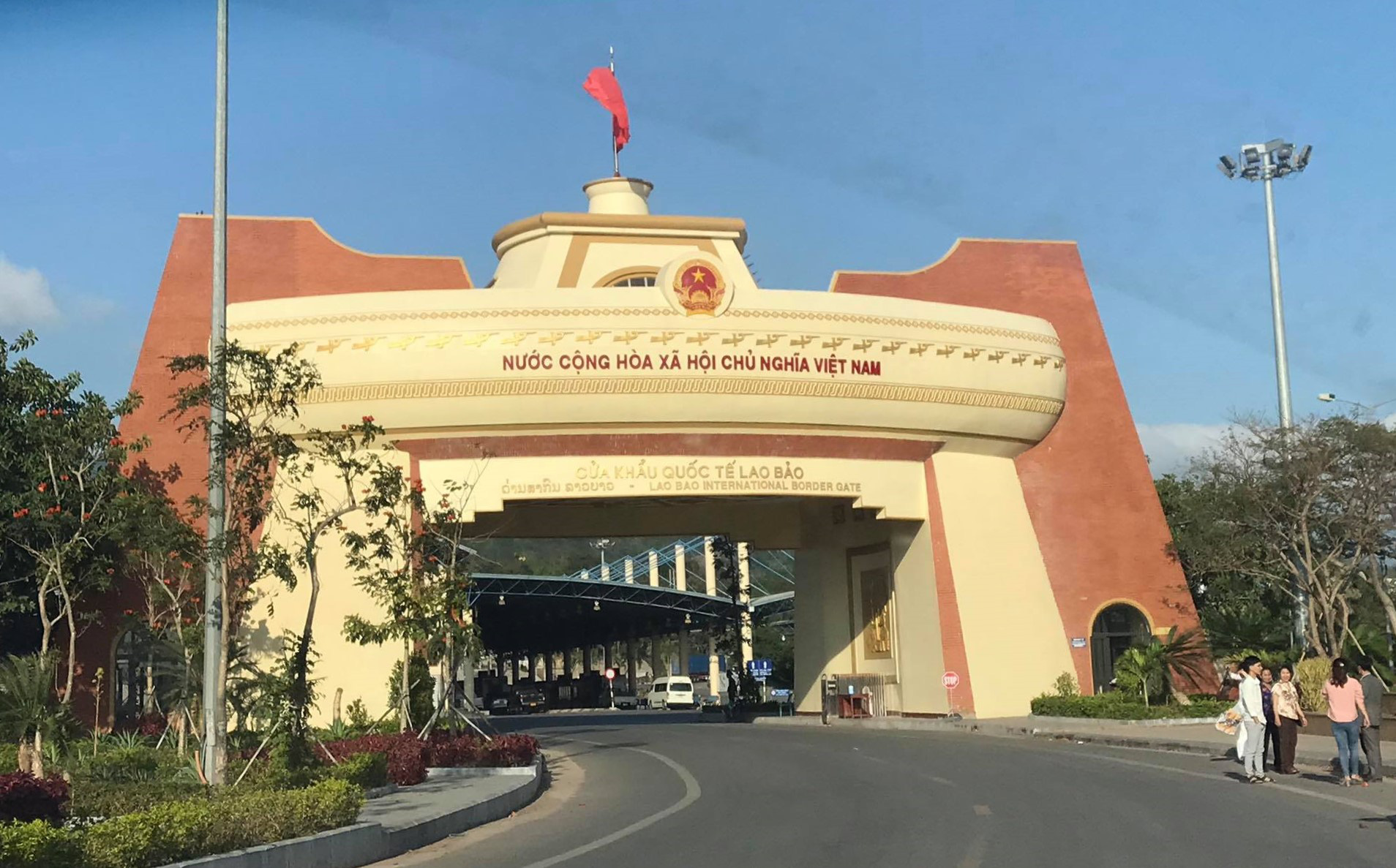
The special thing about this border gate area is that it is located opposite the Savanh border commercial area of Laos, so at Lao Bao tourist area, you will have the opportunity to shop for many things at attractive prices. During the Quang Tri tour, you will of Lao Bao border gate, after completing the procedures, you can eat rice from 3 countries: Vietnam, Laos, and Thailand within 1 day.
11. Dakrong nature reserve
If you are a person who loves to explore majestic mountains, admire vast forests, and immerse yourself in fresh, cool streams, then Dakrong nature reserve is the place for you when traveling to Quang Tri.
This is one of two conservation areas that still retain the largest area of lowland evergreen forest in Central Vietnam (the other is Phong Dien Nature Reserve of Thua Thien – Hue province). This place is also a place to record rare and endangered species such as Langurs, Pig-tailed Monkeys, Red-faced Monkeys, and Red-cheeked Gibbons. In particular, two new species of mammals, the Saola and the Giant Muntjac, have been discovered in the area.

12. Visit the villages of the Pako and Bru Van Kieu people
The Pako and Van Kieu people are two ethnic groups with the surname Uncle Ho, living in Dakrong, Huong Hoa, Vinh Linh and Gio Linh districts of Quang Tri province. In 1946, the first general election of the Democratic Republic of Vietnam was held. When the list was drawn up for the Pako and Van Kieu ethnic groups, officials asked the compatriots’ full names and they acknowledged that they were Uncle Ho’s descendants. Lake.
In 1957, Uncle Ho visited the Quang Tri battlefield. Mr. Ho Ray and a number of compatriots found him and asked him to let the Van Kieu and Pa Co people have his surname Ho. The people of the two highland ethnic groups are not without their own family names. Our people have nearly 70 different family names, but they want to bear his Ho family name as a symbol of their devotion and loyalty to each other. with the Party, with Uncle Ho.
The Pako and Bru Van Kieu people have a very rich musical instrument heritage. Each type of musical instrument serves a different festival. If in the custom of going sim, the Bru Van Kieu and Pa Ko people use the Ta Lu and Khui flutes, then “sacrifice to the gods and funerals must have bars, gongs, and drums; I’m glad I had to have a distant musical instrument; The ceremony to pray for the soul must have a pi flute…”
The Bru Van Kieu and Pa Ko people have many traditional crafts such as brocade weaving and wickerwork that have been preserved until now. If you have the opportunity to travel to Quang Tri, visit the houses of the Pako and Van Kieu people. They are very hospitable and will be ready to welcome you so you can learn about culture, customs, and stories about the Party. and Uncle Ho,…

Above we have introduced Quang Tri tourist attractions for visitors to refer to. In addition, there are many other tourist attractions that tourists can refer to such as Ta Puong Waterfall, Sa Mu Pass, Chenh Venh village eco-tourism area… Visitors can refer to more articles about Quang Tri tourism.